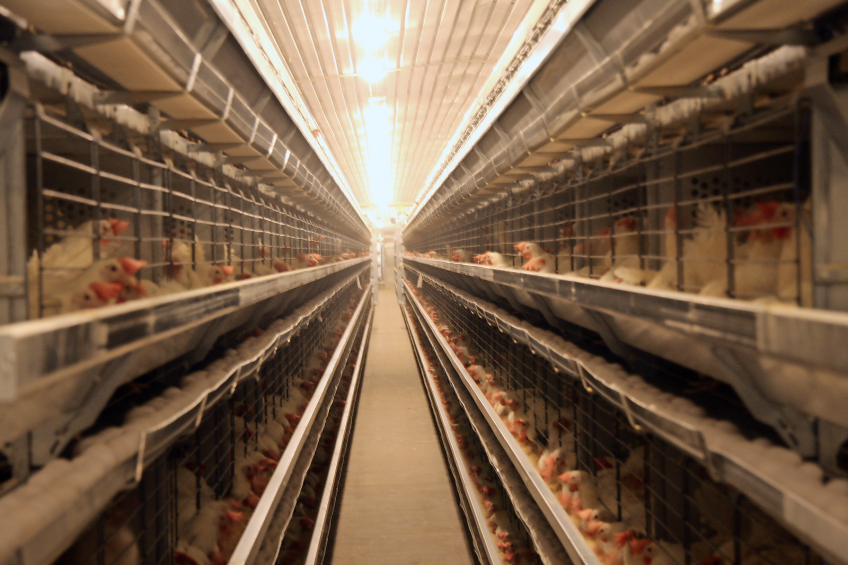EU style layer farm in Abu Dhabi, UAE

Keeping layers in a harsh environment like ?in the Middle east, is not an easy task. Yet ?the Al Ain Poultry farm in Abu Dhabi manages ?to achieve good results. The secret lies in ?professional management, using solid and maintained equipment, and providing ?excellent housing conditions.
By Ad Bal
The Middle East is an important egg market and professional egg producers are responding to the high demand in the region. One such a producer is Al Ain Poultry, located nearby the city of Al Ain in Abu Dhabi. Besides layers, Al Ain also keeps a broiler and a dairy division. The company is jointly owned by the government of Abu Dhabi and by Abu Dhabi citizens who received shares as a grant from the Emirate of Abu Dhabi.
“On our layer premises, we keep about 290,000 Hisex birds through five rearing cycles per year,” says technical manager Renier Jooste of Al Ain Poultry. “By doing so, we have continuous supply to our customers in the UAE region. Nothing is exported, everything is consumed locally. We keep our flock to an age of about 75-78 weeks and then they are depopulated. The exact moment depends on various factors such as productivity, egg quality and availability of day old layer chicks.”
Above standards
“Multi-age farms are the norm in this area,” Jooste adds. “But the government encourages small scale and backyard farming. As a result, there is quite a high disease pressure and it is difficult to keep our flocks free from disease. Of course we do vaccinate properly against IB, ND and AI. Yet we must accept relatively high mortality among the productive flocks. Production figures are very satisfying however. We even produce slightly above the Hisex standards. At peak production they even gear up to 98-99%.”
During summer, temperatures easily soar up to over 40°C in this part of the world. Hence, adequate management practices are needed to provide good conditions for the hens. According to Jooste, they do everything to let the birds feel comfortable, like adequate housing and ventilation, but also providing diets which are based on the birds’ physical conditions. Feed is supplied from an external source in Abu Dhabi.
Refurbished houses
“We keep our layers in six production and two rearing houses, five of which were recently reinstalled with Salmet cages,” says Jooste. “We used Salmet and Meller cages in the past. These have done well over the years, but there comes a time when they need to be changed for new and modern ones. Although we have kept them in good condition, they needed replacing after all the corrosion damage that was caused by the hard local well water. Now we have access to desalinated water from the municipality supply. This will ensure that we do not suffer from the same
corrosion issues again and help us to keep the cages in good condition. These Salmet cages are of a high quality and should be able to withstand the rigours of our use in these harsh conditions. Especially during summer when we have high humidity levels, caused by the evaporative cooling system. The same holds true for ventilation control, in this case from Hotraco and fans and cooling system from Munters.”
Pre-enriched colony
One would not expect a current EU style housing system in this part of the world. “Yet you can find it in our refurbished houses,” says Jooste. “The UAE usually follows European trends. Although there’s no regulatory requirement, we have chosen to install Salmet’s 4-tier ‘AGK 2000’ pre-enriched colony cages. By doing so, we have set a trend. Most likely we are far ahead of what may come in the UAE in the not too distant future”. The choice of cages was strongly influenced by the fact that a colony cage can provide better conditions for the
layers. The cages are wider, have more height, which especially allows better ventilation for the birds. On average they have 600 cm2 of floor space per hen. 22 layers are kept together per colony cage, allowing them to move freely. The perches are made of galvanised steel and are also an integrated part of the cage system’s construction.
Kept in top condition
All the production houses are linked to the egg grading and packing station at the site. Here, a couple of 33 year old Moba machines are still working properly. Even Moba staff are excited to see that it is still in use after so many years. “That all has to do with proper maintenance,” says layer production manager Abbas Mahmoud Osman. “Actually that illustrates our philosophy. We wish to be sure that everything is kept in top condition. Whether it is our layer flocks, or our houses and inventory.” Jooste agrees. It guarantees that everything is done to achieve the best possible results, and it very much looks like this is the case at Al Ain Poultry.
Join 31,000+ subscribers
Subscribe to our newsletter to stay updated about all the need-to-know content in the poultry sector, three times a week. Beheer
Beheer











 WP Admin
WP Admin  Bewerk bericht
Bewerk bericht